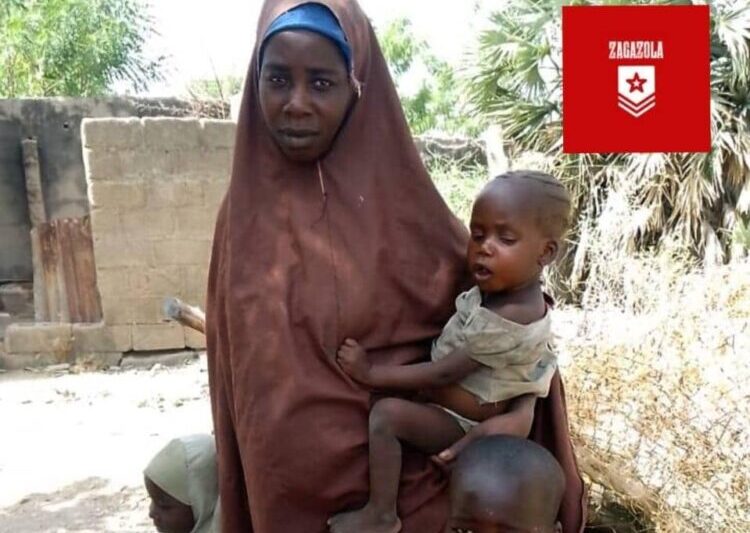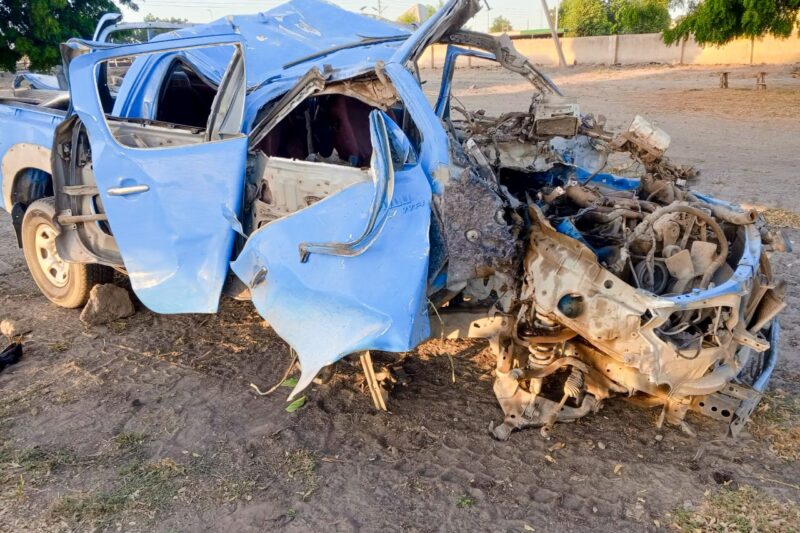Teaching and learning under trees is hard – there are no tables or chairs, no boards on which to write, too few learning materials and often no adequate ablution facilities – but in the rainy season months of June, July and August, it becomes an even harder task, almost impossible in fact.
Although often blamed on the insurgency, this is not a new phenomenon. Teaching and learning under trees was happening in northeastern Nigeria before the insurgency started in 2009.
However, it is true that the insurgency has worsened schooling in the northeast. Teachers and children, mostly girls, were – and, in some places, are still being – kidnapped, raped and killed, with many of the abducted girls being forced into early marriages by their attackers. A large number of schools were shut down and many remain so.
The insurgency has also displaced millions of people, who sought safer places in internally displaced persons’ camps and host communities, and, in the process, added to the already severely congested schools.
Harsh weather, cold, extreme heat and the rainy season just add to the problem, as do the dilapidated infrastructure and poor budget allocations for the education sector.
And the government is fully aware of the problem. Last year the House of Representatives Committee on Basic Education and Services said it was an “embarrassment” to have schoolchildren sitting on bare floors and learning under trees in the 21st century.
The legislators conceded there were dilapidated buildings on school premises, which posed a risk to children, and said the lack of water, playgrounds, adequate furniture and toilets was “alarming”.
But one of the most serious problems schools – both public and private – face is the vast number of children who need to be educated. Most schools are already congested, having far too few classrooms and forcing teachers to conduct some classes in outside sheds and/or under the shade of the trees. Many have to refuse children the education they seek because the schools are simply too full.
Ahmed Lawan, the headmaster of Tafiz Integrated Private School in Maiduguri told RNI reporter Nana Hadiza Mustapha that they were forced to conduct classes under trees because they did not have enough classrooms to accommodate all their schoolchildren.
He said they have four classrooms and more than 700 pupils.
“The classrooms are already congested and we have no other option than to hold classes in outside sheds or under trees – or send the kids home,” said Ahmed.
“In the months of June, July and August there are frequent rainfalls, some of which are very heavy. We are often forced to suspend classes and that affects the performance of the pupils. Sometimes, we can’t complete the syllabus for the term and have to conduct examinations without completion. There have been many times when we have had to postpone examinations because of the rain.”
Lawan said it was not just his school that suffered. “There are many schools like ours which also experience the same problems. It affects both private and public schools. This is a school within the Maiduguri metropolis and we are struggling; can you imagine what it is like at schools in rural areas?
“When I was a kid I studied in a village school. It was the only school in the whole village and we had only two classrooms for the whole school. We lacked many facilities and it was really hard trying to keep up learning.”
Umar Goni, a lecturer in the education department of the University of Maiduguri, said for teaching and learning to take place effectively, there had to be a conducive place for both the teachers and the pupils.
“Apart from not being conducive, learning under trees is sometimes a risk. Pupils’ safety and wellbeing could be compromised. The pupils are not well protected. The safety of schoolchildren should always be the priority,” Umar said.
“We are aware that during rainy season, those lessons that are conducted under trees or in open sheds have to be suspended. This has an enormous detrimental effect on children, many of whom could end up becoming another one of the staggering number of out-of-school children. Recent findings by UNICEF [the United Nations Children’s Fund] show Nigeria has more than 18.5 million out-of-school children.
“If you add the number of children who are taught under trees and cannot go to school because of the weather, that number could increase substantially. It’s a depressing scenario and will get only worse unless the government improves budget allocations to schools, builds more classrooms and provides more learning materials. Dilapidated buildings and other faulty structures need to be rebuilt. And adequate ablution facilities must be provided.”
ZAINAB ALHAJI ALI








